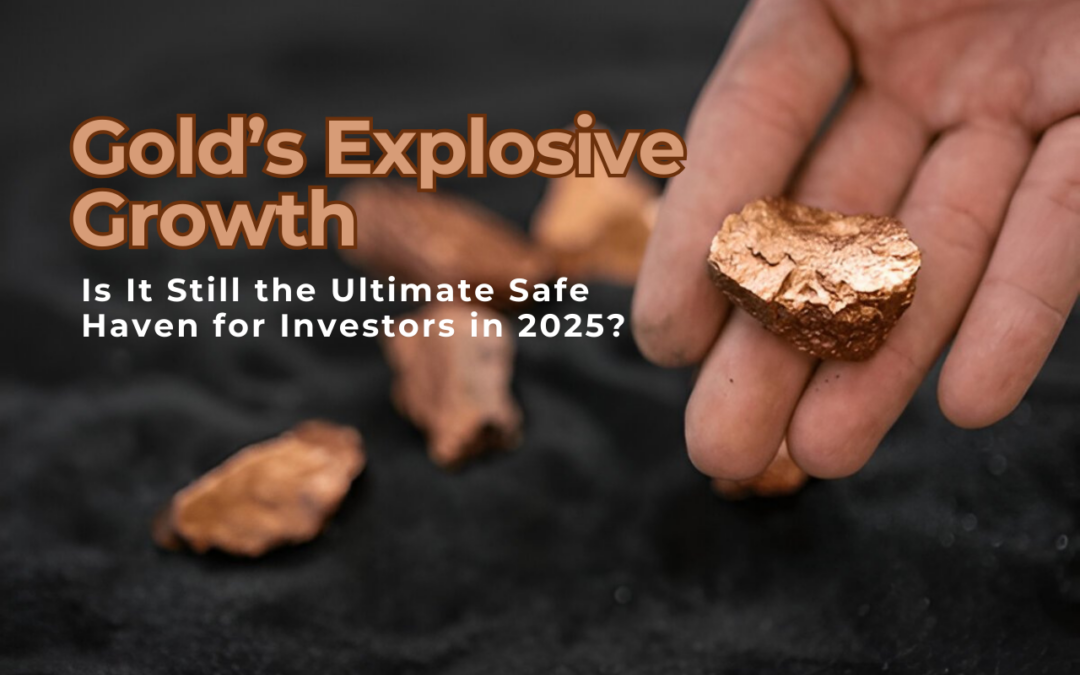Gold has always been synonymous with wealth, stability, and financial security. As global economies face persistent inflation, geopolitical tensions, and financial market volatility, investors are once again turning to this precious metal. But is gold still the safest investment option in 2025? This article dives deep into gold’s 60-year journey, its explosive growth, and whether it remains the ultimate safe haven.
A 60-Year Overview: Gold Prices and Market Fluctuations
Understanding gold’s historical performance provides valuable insights into its potential future. Below is a breakdown of gold’s price evolution over the past six decades:
1. The Gold Standard Era (1960-1971)
During this period, gold was pegged to the U.S. dollar at $35 per ounce under the Bretton Woods system. This stability made gold a reliable store of value but limited its price growth.
2. The Post-Gold Standard Boom (1971-1980)
In 1971, President Nixon abandoned the gold standard, allowing gold prices to float freely. This led to a meteoric rise:
- 1971: $35 per ounce
- 1975: $139 per ounce
- 1980: $850 per ounce (due to inflation, oil crises, and economic uncertainty)
3. The Dormant Decades (1981-2000)
Following the 1980 peak, gold entered a prolonged decline and stagnation:
- 1990: $383 per ounce
- 1999: $252 per ounce (20-year low)
4. The 21st Century Surge (2001-2011)
Economic instability and financial crises sparked a renewed gold rally:
- 2008 Global Financial Crisis: Investors flocked to gold, pushing prices to $1,000 per ounce.
- 2011 Peak: $1,921 per ounce amid Eurozone crisis and inflation fears.
5. The Post-Crisis Adjustment (2012-2019)
As global economies recovered, gold corrected:
- 2015: $1,050 per ounce (five-year low)
- 2019: $1,500 per ounce (resurgence due to trade wars and recession fears)
6. The COVID-19 Effect and Beyond (2020-2025)
The pandemic-induced economic uncertainty drove gold to new highs:
- August 2020: $2,067 per ounce (record high)
- 2021-2023: Stabilized between $1,700 – $2,000
- 2024-2025: Expected to surge past $2,500 due to inflation and geopolitical crises.
Why Gold Has Exploded in Value in 2025
Several key factors have contributed to gold’s impressive rally in 2025:
1. Inflation Hedge Amid Economic Uncertainty
With inflation remaining high across major economies, gold continues to be a go-to asset for preserving purchasing power.
2. Geopolitical Instability & Global Conflicts
Rising tensions between global superpowers, supply chain disruptions, and wars have driven investors to seek the security of gold.
3. Central Bank Buying Spree
Countries like China, Russia, and India have aggressively increased their gold reserves, reducing reliance on the U.S. dollar.
4. The Decline of Traditional Safe-Haven Assets
Bonds, real estate, and fiat currencies have lost their appeal due to low returns and high volatility, making gold a more attractive option.
5. Digital Gold and Tokenization Trends
The rise of gold-backed cryptocurrencies and blockchain-based gold investments has made it easier for retail investors to buy and trade gold.
Is Gold Still the Ultimate Safe Haven?
Pros of Investing in Gold in 2025
✅ Safe Haven Asset: Gold has historically outperformed during crises. ✅ Inflation Protection: A proven hedge against currency devaluation. ✅ Liquidity: Gold is easy to buy, sell, and trade globally. ✅ Diversification: Balances investment portfolios, reducing overall risk. ✅ Growing Demand: Central banks and digital markets are driving demand.
Cons of Investing in Gold in 2025
❌ No Yield: Unlike stocks or bonds, gold does not generate passive income. ❌ Volatility: Despite being a safe haven, gold prices fluctuate based on market sentiment. ❌ Storage & Security Issues: Physical gold requires safekeeping.
Expert Predictions: Where is Gold Headed Next?
Gold analysts and financial institutions project that gold prices will continue to rise due to increasing demand and economic instability.
- Goldman Sachs: Predicts gold reaching $3,000 per ounce by 2026.
- JP Morgan: Expects gold to hover between $2,500 – $2,800 in 2025.
- World Gold Council: Sees continued growth driven by central bank purchases and inflationary pressures.
Final Verdict: Should You Invest in Gold Now?
Gold’s historical performance, combined with current economic conditions, suggests that it remains one of the best safe-haven assets in 2025. While it may not offer the aggressive returns of stocks or crypto, its stability and resilience make it a must-have in any investment portfolio.
If you are looking for security, inflation protection, and diversification, gold remains a solid investment choice.However, ensure that you balance it with other assets for a well-rounded financial strategy.
Conclusion
Gold’s explosive growth in 2025 is a testament to its timeless value. With increasing geopolitical uncertainty, rising inflation, and central banks accumulating reserves, gold remains the ultimate safe haven for investors. Whether you’re a seasoned investor or a beginner, keeping a portion of your portfolio in gold can be a wise long-term strategy.












